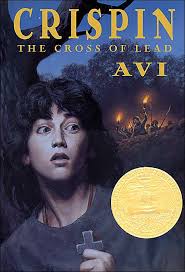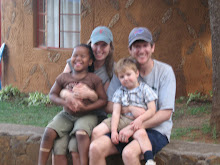Sunday, April 26, 2009
Saturday, April 25, 2009
 Fablehaven, Secrets of the Dragon Sanctuary
Fablehaven, Secrets of the Dragon Sanctuary By: Brandon Mull
Awards:
PB: Shadow Mountain, 2009
Main Character: Girl and boy
Location: Mainly on a secret preserve north of Montana, present day
Focus: Fantasy, trust and betrayal, risk, choice
Review:
I loved, loved, loved this book! I am a huge fan of this series and have anxiously awaited the arrival of the latest installment of Fablehaven. I have to say that other than Rick Riordan's Percy Jackson series, I have not read a series that I have enjoyed this much since Harry Potter. Perhaps that sounds trite, but there it is.
Fablehaven is unique (ahhhh) action-packed, creative and enthralling. I have found that it is easy for my students to read and to follow, while making them think (yippee). Although I have never taught any of the books in this series, I do think that they would make excellent read alouds. So many discussions could easily flow from the chapters and it is entertaining enough to keep even my most disinterested readers attentive after lunch.
Secrets of the Dragon Sanctuary, starts off with Kendra, the main character, being kidnapped by the Society of the Evening Star. The action continued to be non-stop throughout the story. Although I was sad to learn that most of the book does not take place at Fablehaven, the dragon sanctuary of Wyrmroost is full of enough fascinating and terrible creatures to keep one pleasantly on edge. The usual gang, Seth, Kendra, Tanu,Gavin and Warren along with a few others travel to Wyrmroost to collect the key that will unlock a vault containing the translocator. This artifact, along with four others are capable of opening the demon prison, Zzyzx, thus unleashing terrors unknown and the inevitable destruction of the world. Unfortunately, Wyrmroost is a death trap and our brave adventurers are up against impossible odds. There are a few big surprises in this fourth installment of Fablehaven, that I must admit I did not see coming (making the story that much better). If you haven't picked up this series yet, do and recommend it to your friends and for sure your young readers. There is also a though-provoking reading guide at the end of the book.
Possible Uses:
Engaging reluctant readers
To think about risk and consequences
An excellent addition to a unit on fantasy. It would be fun to have students research the "creatures" which are borrowed from other sources and which are made up by the author. Students could compare and contrast the behavior of the characters in this story and in other stories. For example, centaurs are originally from Greek mythology and were known to be dark and taken to wild, drunken parties. In Fablehaven they consider themselves superior to other creatures. They are vain and mainly focused on the survival of their culture. They are easily prone to fighting. How do other authors of fantasy novels depict centaurs? How do the authors create new traits for ancient mythical beings to help them develop their own stories?
Monday, April 20, 2009
 Review: The Mostly True Adventures of Homer P. Figg
Review: The Mostly True Adventures of Homer P. Figg
By: Rodman Philbrick
Awards:
PB: The Blue Sky Press
Main Character: Boy
Location: Maine, Battle of Gettysburg, 1863
Focus: Historical Fiction, slavery, Underground Railroad, Civil War, Battle of Gettysburg, brothers, loyalty
Review:
Homer P. Figg and his brother, Harold are orphans living with their cruel uncle, Squint. Squint sells Harold to the Union Army in place of a richer recruit even though he is not of age to fight. Thus ensues the story of Homer P. Figg as he travels around the eastern states in search of his brother. Along his journey he is captured by slave catchers, assists on the Underground Railroad, joins a traveling medicine show and eventually makes his way to the Battle of Gettysburg where he is rejoined with his brother. Homer’s lies provide comic relief as his stories could make the tallest tales sound true. The story was a quick trip through some of the major issues of the times as well as the love and loyalty Homer has for his brother. This book was a fairly quick read and a good companion to any unit on the Civil War or the Battle of Gettysburg. There are some interesting parts about the Underground Railroad as well, although this is only a part of the story. It is a good representation of some of the major issues and lifestyles of the time.
Monday, April 13, 2009
Review: Crispin, The Cross of Lead
 Crispin and the Cross of Lead
Crispin and the Cross of Lead By: Avi
Awards: 2003 John Newbery Medal, 2003 ALA Notable Children’s Book
PB: Hyperion Paperbacks for Children
Main Character: Boy
Location: England, 1377
Focus: Freedom, historical fiction, coming -of- age, self discovery, relationships
Review:
Crispin is a young boy living in an impoverished village in 14th century England. The plague has wiped out almost half of the British population and peasants and serfs are often ill-treated by the lords of the villages. After the death of his mother he is chased from the village and had to fend for himself. His ignorance of the world is hard for modern day people to fathom, as is his peril. He meets a wandering entertainer by the name of Bear who makes Crispin his servant. Throughout their adventures, Bear helps Crispin to gain confidence in himself and eventually, the freedom he has been craving. Many secrets are revealed and there is plenty of action. The reader gets a sense of what life in this time period was like. With a little research, students can better come to understand the peasant/serf/lord relationships, the Hundred Years’ War, the politics of ruling kings, the Peasant’s Revolt and the role of the Christian (Catholic) church in society.
Possible Uses:
Interesting examination of what freedom has meant to different people in different times and how that freedom is achieved.
Excellent coming- of -age story, learning to know yourself and gaining self-confidence.
Examine the different relationships during the time period and how modern society has changed. Are there similar relationships in our society today?
How did Christianity play a part in people’s lives? How was religion used and abused? How is religion viewed in today’s society? Are there groups that are lacking freedoms due to religious interpretations?
